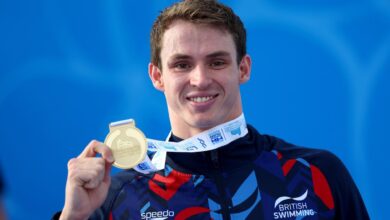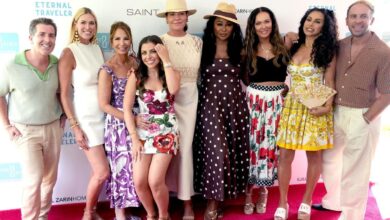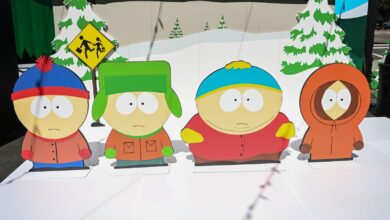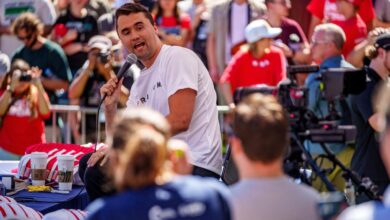Riga Arts Festival 2025: Survival Kit 16 Highlights
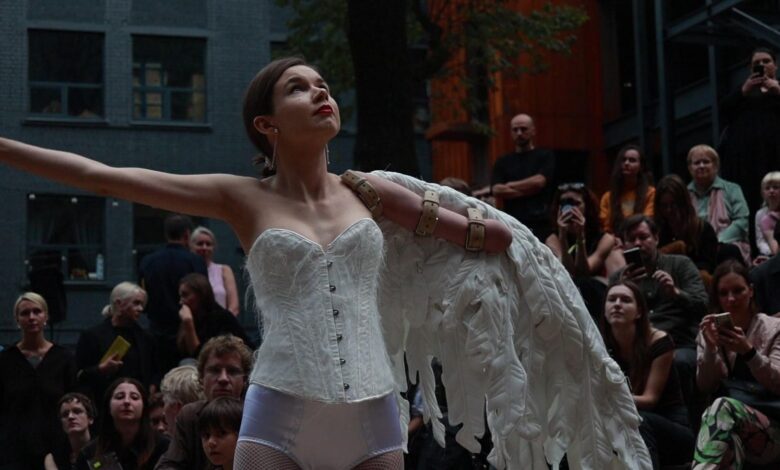
📝 usncan Note: Riga Arts Festival 2025: Survival Kit 16 Highlights
Disclaimer: This content has been prepared based on currently trending topics to increase your awareness.
Nadia Markiewiz, Lonesome Wing performance at Survival Kit 16, Riga, Latvia
Paul Allen/ Andfotography2
Riga’s thrilling annual contemporary arts festival, Survival Kit, opened this week (on until 28 September 2025) with a brilliant and eclectic exhibition of painting, sculpture, video, installation and performances. The Baltic festival was launched in 2009 by Solvita Krese, Director at the Latvian Centre for Contemporary Art (LCCA) as a response to budget cuts in culture, thanks to the economic crisis affecting Latvia at the time. Each year, the festival’s appointed curator selects a theme around “survival” and invites artists from around the world to create work in response to that topic which seems particularly apt today with the current global issues we face. This year’s festival includes a stellar lineup from a Polish-based artist exiled from Belarus, to a Ukrainian artist who traveled for a day from Kyiv, and a Palestinian artist now living in Berlin. In a city once occupied by Poland, Sweden and Russia, Survival Kit’s particular “Baltic” sensibility shines through, making this a must-visit exhibition for visitors from outside of the region.
Intriguing Festival Locations
Installation shot of Survival Kit 16, Riga
Paul Allen/ Andfotography2
Survival Kit’s choice of venue is a key part of the festival’s identity and makes this art exhibition all the more fascinating. The festival inhabits empty buildings in Riga, exploring their potential and possible development strategies that could be used to regenerate them. Last year’s festival was held in a Neo-Gothic building in the old town while this year’s 16th edition is in an urban complex in a newly constructed, currently vacant building. Like the venues of previous editions, this space is undergoing transformation. A former factory that made sweaters, in an area that was once a remote, historic workers’ district, is being regenerated as a new urban quarter: the creative city of Grīziņdārzs. This area is being revitalised, transforming a once “placeless” place into a dynamic urban hub.
Survival Festival Themes
Survival Kit 16, installation view
Survival Kit 16
Austra Berzina, director of Survival Kit, invited Berlin-based artist collective Slavs and Tatars and Michał Grzegorzek, a Program Director of Studio Gallery in Warsaw to curate this year’s exhibition, The House of See-More. The survival theme this year takes a mythical Eurasian “Wonderbird” as a departure point. The bird embodies the idea of fluidity and transnationalism, taking many faces throughout its depiction historically– man, woman, dog and can be seen as the opposite of a national symbol like the macho “eagle.” Beside the focus on Eastern Europe, the festival turns increasingly to regions that are united by the shared experience of having been part of the Soviet empire – namely, Central Asia and the Caucasus. As Polish historian Jacob Mikanowski says “Eastern Europe owes its existence to the intermingling of languages, of cultures, and, perhaps above all, of faiths. It is the meeting place of the Catholic West and the Orthodox East, of Ashkenazi and Sephardic Jewry, of militant Islam and crusading Christianity, of Byzantine mystics and Sufi saints. If anything marks Eastern Europe as a place of its own, and not someone else’s periphery, it is this function as gateway and bridge between and among different traditions.”
Highlights of Survival Kit 16
Survival Kit 2025 features 23 artists, publishers, performers and educators from countries including Estonia, Belarus, Latvia, Poland, Kazakhstan and Ukraine. The works have been thoughtfully arranged over several floors of the spacious former factory and are all worth seeing, with several standout pieces.
Shadi Habib Allah, “In-stock” at Survival Kit 16, Riga
Paul Allen/ Andfotography2
“In-stock,” an installation by Berlin-based Palestinian artist Shadi Habib Allah, as with all of his work is much more than it seems and like much of the art in Survival Kit 16, has a disconcerting story behind it. The hardened clear shrink wrap forms represent the typical shrink wrap on cases of groceries like canned goods and soft drinks. The now empty shells serve as a reminder of neighborhood corner stores put out of business by real estate development and big supermarkets. The artist created these in Florida but the piece could easily represent other locations.
kids
Paul Allen/ Andfotography2
A video installation children sleeping by Ukrainian artists Roman Khimei and Yarema Malashchuk is the most disturbing work at Survival Kit 16. “You Shouldn’t Have to See This” highlights the obvious issue of voyeurism but the backstory is even more upsetting. Thankfully, they are all safe now but each child shown here was kidnapped and taken into Russian territory after the invasion of Ukraine. The artists say that the number of such abductions since the beginning of the Russian-Ukrainian war in 2014 range from 20,000 to over a million. Khimei and Malashchuk won the prestigious Pinchuk Art Prize in 2020. The prize is awarded bi-annually to a Ukrainian artist under age 35.
Oksana Shachko · Oksana Šačko 1 Untitled (Miraculous Catch of Fish) and Untitled (Saint John the Baptist) at Surval Kit 16
Paul Allen/ Andfotography2
Two exquisitely detailed icon paintings by the late Ukrainian Oksana Shachko hang on an unfinished wall. The artist, who trained as a traditional Orthodox icon painter, later was a founder of the feminist Femen movement. Her work includes subversive details like dinosaurs rather than dragons in a portrait of St Michael.
Ethereal and moving, Warsaw-based Nadia Markiewiz’s “The Lonesome Wing” performance was one of the most memorable of the opening evening. The wing worn for the performance partially replaced the artist’s missing forearm and is on show as a sculptural piece in the circular basement venue. The artist plays the role of a fictional, historical freak – a 19th-century performer known under the stage name The Lonesome Wing, who, according to rumors, was born with the wing of a white bird instead of one arm. The piece is in some ways autobiographical as the artist has said she sometimes felt like a freak who had to hide her arm while growing up.
Performance artist with her garment wall sculptures
Paul Allen/ Andfotography2
Performance artist Filipa Rutkowska transforms garments into striking wall sculptures that can be appreciated for their aesthetic value alone. No longer wearable clothes, the works are now sensuous, symbolic objects – vessels of bodily memory, intimacy and queer embodiment.
Sergey Shabohin, “Reliquary XX–XXI” (detail) at Survival Kit 16, Riga
Paul Allen/ Andfotography2
Belarusian artist Sergey Shabohin presents “Reliquary,” an ongoing project featuring relics started in 2009. For this special dual reliquary for Survival Kit, each piece includes details from 100 famous artists’ artworks of birds, presented along with their death dates. Created specifically for Survival Kit 16, the work draws on the figure of the Simurgh– the mythical “wonderbird” of multiplicity – and the Sufi allegory of the birds who journey in search of truth, only to find their own reflection.
Karol Radziszewski, Mon Cheri Sovietique at Survival Kit 16, Riga
Survival Kit 16
Karol Radziszewski’s film “Mon Cheri Sovietique” is made up of hundreds of images of Soviet soldiers and their gay Polish lovers with their faces obscured, in the 1990s, obviously a taboo in Russian society. The focus of the work is the figure of a soldier, who is not fighting on the war front but takes off his uniform in front of a camera. The film is an attempt to save an uncomfortable, suppressed archive that was destinedfor destruction.
Painting by Sana Šahmuradova-Tansk, Survival Kit 16, Riga
Survival Kit 16
Goya and William Blake may come to mind when viewing Ukrainian artist Sana Shamuradova Tanska’s series of large paintings. Born in Odesa, Ukraine, after living in Toronto, she now lives and works in Kyiv. The works explore trauma and the violence committed by the aggressor state Russia.
Not your average puppet theater, featuring a rat and a sparrow debating class and colonial violence, Kexin Hao’s “Revolution Is a Dinner Party” is a playful subversion of Mao’s statement “a revolution is not a dinner party.” The Hague-based, Beijing born performance artist creates experiences addressing history, society and heritage through bodily engagement.
Artists in Survival Kit 16
As a Journal, Askhat Akhmedyarov, Demetrio Castellucci, Ali Cherri, Bekhbaatar Enkhtur, Shadi Habib Allah, Kexin Hao, Inese Jakobi, Edith Karlson, Roman Khimei & Yarema Malashchuk, Nadia Markiewicz, Enad Marouf, Daria Melnikova, Luīze Nežberte, Karol Radziszewski, Filipka Rutkowska, Sergey Shabohin, Malina Suliman, Sana Shahmuradova Tanska, Oksana Shachko, Marje Taska, Ola Vasiljeva, and Lidija Zaneripa.
Tickets and Hours
Survival Kit 16 at Zemitāna iela 9, Grīziņdārzs, runs until 28 September 2025. Check the website for special walks and performances througout the month. Opening hours: Wed–Sun: 12:00–20:00 Admission: General admission: €8 Concessions: €5 Free for Preschool children, students, disabled visitors
